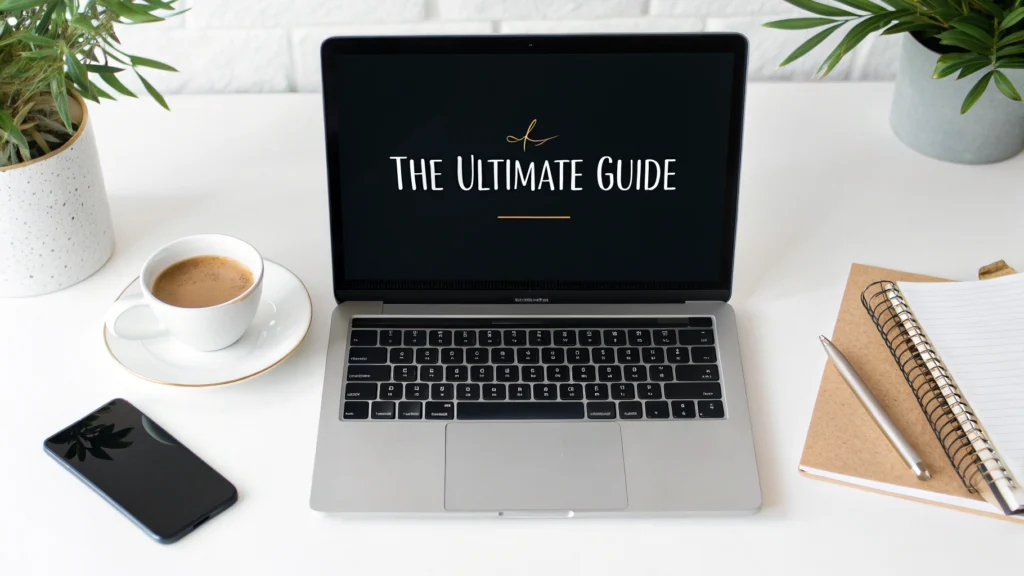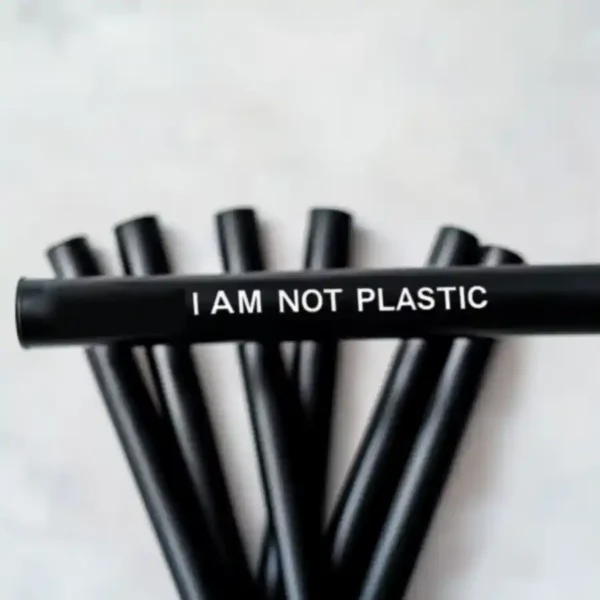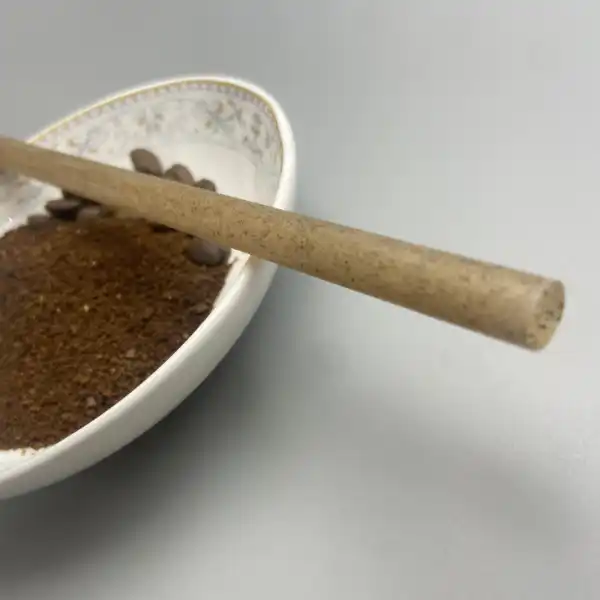
परिचय
Picture this: A customer walks into your café, orders their favorite drink, and smiles when they notice the sleek bamboo straw in their beverage. This isn’t just about serving drinks anymore—it’s about serving purpose.
As the demand for sustainable products increases, businesses that adapt quickly can leverage this trend to enhance their market position. The choice of eco-friendly straws is a significant step towards this goal.
smoothie coffee grounds straw o8mm x 210mm
The landscape of food service sustainability has reached a tipping point. An overwhelming 83% of consumers are willing to pay more for sustainable dining experiences, with eco-friendly practices directly influencing their choice of establishments (Source: McKinsey Consumer Behavior Report, 2024). For forward-thinking businesses, the switch to sustainable straws isn’t merely an environmental gesture—it’s a strategic imperative that drives both profit and purpose.
The Economics of Going Green: Beyond the Bottom Line
The Real Numbers Behind the Revolution
Let’s cut through the noise with hard data. A mid-sized café serving 500 customers daily uses approximately 150,000 straws annually. Here’s what that means in real terms:
Traditional Plastic Route:
- Annual Cost: $2,250 ($0.015 per straw)
- Waste Management: $1,800
- Brand Impact: Negative consumer perception
- Total Real Cost: $4,050+ annually
Eco-Friendly Bulk Alternative:
- Annual Cost: $3,750 ($0.025 per straw)
- Waste Management: $450
- Brand Value Addition: $5,000+ (documented increase in customer loyalty)
- Net Positive Impact: $1,750 annually

Smart Sourcing: The Art of Strategic Bulk Purchasing
In today’s competitive market, understanding the art of bulk purchasing can significantly enhance your business’s operational efficiency and sustainability.
सामग्री चयन मैट्रिक्स
Selecting the right materials is crucial for balancing cost-effectiveness with environmental impact. Below is a detailed matrix to help guide your decisions:
| सामग्री | सहनशीलता | Cost-Effectiveness | पर्यावरणीय प्रभाव | सबसे अच्छा उपयोग केस |
|---|---|---|---|---|
| बांस | ★★★★★ | ★★★★ | ★★★★★ | Premium establishments |
| कागज़ | ★★★ | ★★★★★ | ★★★★ | Quick-service venues |
| प्ला | ★★★★ | ★★★ | ★★★★ | Mixed-use scenarios |
| गन्ना | ★★★★ | ★★★ | ★★★★★ | Specialty drinks |
Case Study: The Green Sip Revolution
The Portland Coffee Collective, a group of 15 independent cafés, implemented a joint bulk purchasing program for bamboo straws. Results after 12 months:
- 42% reduction in per-unit costs
- 156% increase in positive social media mentions
- $12,000 average additional revenue per location from eco-conscious customers
Implementation Blueprint: Making the Switch
Comprehensive Guide to Inventory Management
Phase 1: Assessment & Planning
Initiating an effective inventory management process begins with a thorough assessment and strategic planning. This phase is crucial for setting a solid foundation for inventory optimization.
- Conduct usage audit (2-week minimum)
- Calculate storage capacity requirements
- Identify supplier partnerships
Phase 2: Execution
Following the planning stage, the execution phase involves practical steps to implement the planned strategies. This phase is critical for translating plans into action.
- Initial bulk order (3-month supply)
- Staff training program
- Customer communication strategy
Phase 3: Optimization
The optimization phase focuses on refining processes based on real-time data and feedback. This continuous improvement is vital for maintaining efficiency in inventory management.
- Monthly usage tracking
- Supplier performance metrics
- Customer feedback integration
Advanced Inventory Management
The 3R Framework
The 3R Framework introduces a robust methodology for managing inventory effectively, ensuring maximum productivity and minimal waste.
- Reorder Point: Calculate using: (Daily Usage × Lead Time) + Safety Stock
- Rate of Usage: Track seasonal fluctuations (summer usage typically 40% higher)
- Return on Investment: Monitor monthly cost-benefit analysis

Future-Proofing Your Investment
Emerging Trends
To stay ahead in the market, it’s essential to be aware of emerging trends that could impact inventory management strategies.
- Biodegradable smart straws with temperature indicators
- Carbon-negative manufacturing processes
- Blockchain-verified sustainability certificates
Market Projections
The eco-friendly straw market is projected to reach $5.1 billion by 2025, with bulk purchasers positioned to capture 40% cost advantages over retail buyers.
Conclusion: The Strategic Advantage
As we conclude this comprehensive guide, let’s revisit the significant benefits of switching to eco-friendly straws, a decision that aligns both with environmental stewardship and astute business strategy.
The shift to bulk eco-friendly straws represents more than environmental consciousness—it’s a strategic business decision that delivers:
- Documented cost savings of 22-35% through bulk purchasing
- Enhanced brand value and customer loyalty
- Competitive advantage in an increasingly eco-conscious market
- Future-proofed operations against incoming plastic regulations
Remember: In today’s market, sustainability isn’t just about saving the planet—it’s about saving your business while you’re at it.
Author’s Note: This guide is updated quarterly with the latest market data and supplier information. Last updated: March 2024.
-
अक्सर पूछे जाने वाले प्रश्नों
Why should businesses consider switching to eco-friendly straws?
Switching to eco-friendly straws helps businesses save costs and enhance their brand image while contributing to environmental sustainability.
What are the cost benefits of buying eco-friendly straws in bulk?
Bulk purchases of eco-friendly straws can lead to cost savings of 22-35%, significantly reducing overhead expenses.
How do eco-friendly straws boost customer loyalty?
Customers are increasingly looking to support brands that demonstrate environmental responsibility, enhancing customer loyalty.
Can eco-friendly straws really provide a competitive advantage?
Yes, offering eco-friendly alternatives can distinguish your business in a competitive market, attracting eco-conscious consumers.
What future regulations could affect businesses not using eco-friendly alternatives?
Businesses may face regulations limiting or banning the use of plastic straws, making it crucial to adopt eco-friendly solutions now.
How often is this guide updated?
This guide is updated quarterly to reflect the latest market trends and data.
Where can I find more information about eco-friendly products?
You can visit our product page linked above for a comprehensive list of eco-friendly options we offer.
What other products are considered eco-friendly?
Eco-friendly products include biodegradable cups, recyclable paper bags, and organic food containers.
In Conclusion
This guide has provided a detailed analysis of why adopting eco-friendly straws is not only a moral duty but also a strategic business decision. By embracing sustainable practices, businesses can enjoy cost savings, enhanced customer trust, and a robust competitive edge.
कार्यवाही करना
Ready to make a significant impact on both the environment and your business? Visit our product page today to explore our range of eco-friendly products and start your journey towards sustainability.







